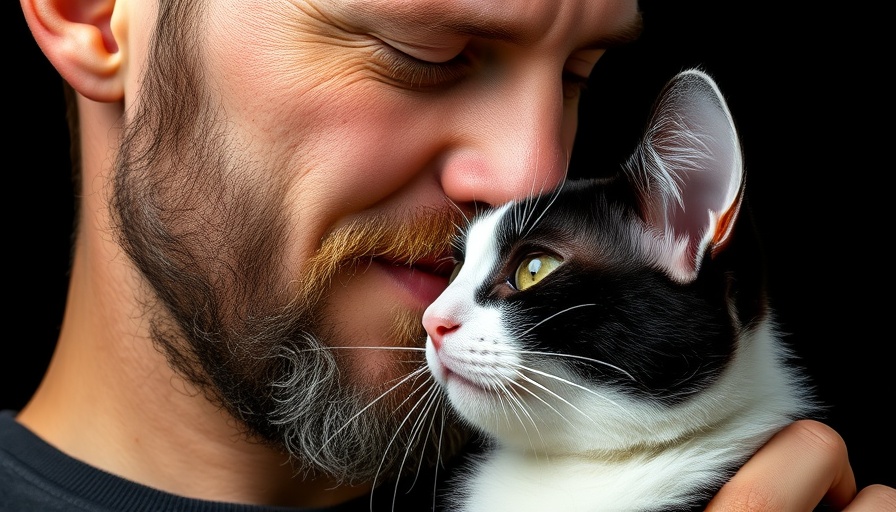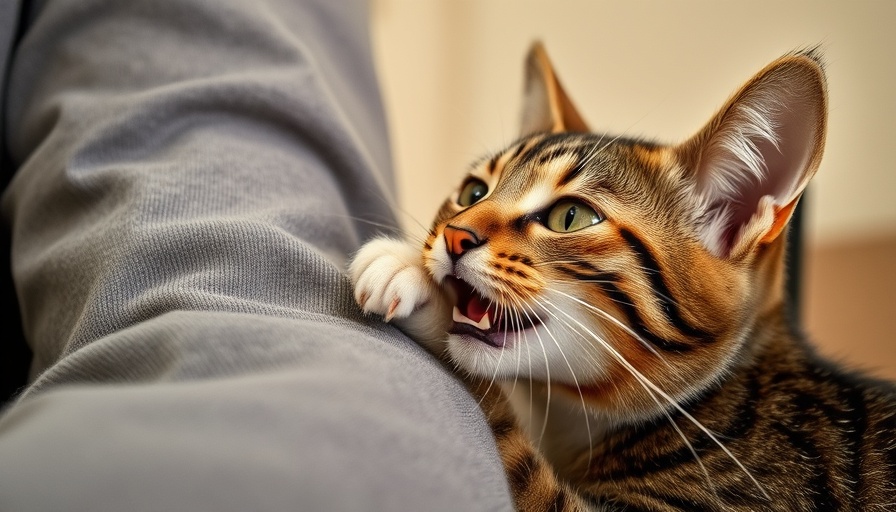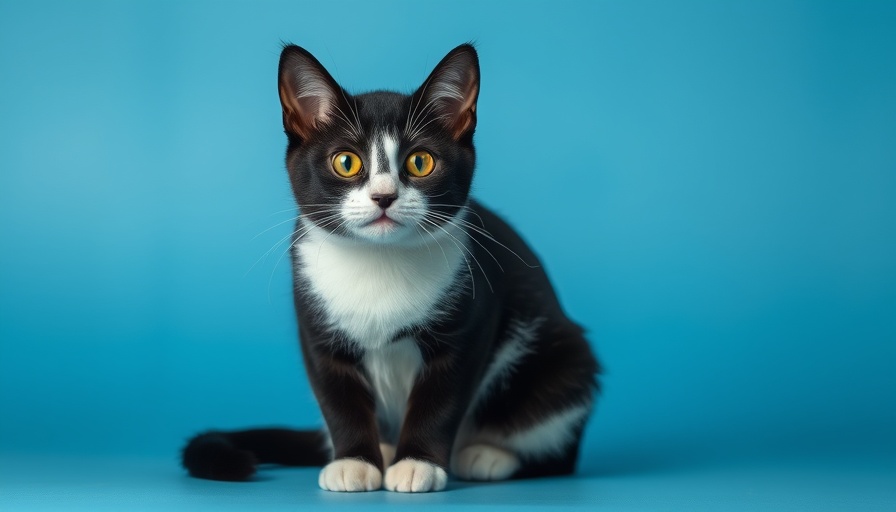
Unlocking the Language of Love: How to Communicate with Your Cat
Have you ever found yourself watching your beloved feline and wondering, "Does my cat truly understand how much I love them?" The relationship between cat and owner is often shrouded in mystery, filled with silent exchanges and subtle signals. While you shower your furry companion with affection through treats, petting, and sweet talk, the genuine understanding of love may sometimes be lost in translation. Fortunately, by learning to speak their language, you can deepen the bond you share in ways you’ve never imagined.
In '8 Proven Ways to Tell Your Cat You Love Them (#5 Will Surprise You)', the discussion dives into feline communication, exploring key insights that sparked deeper analysis on our end.
Sharing Your Scent: The Invisible Thread of Connection
Scent plays an essential role in feline communication. To a cat, your scent is more than just a smell; it's a map of memories, comfort, and security. Consider this: when you leave a piece of clothing, like an old t-shirt, in their favorite nook, you’re essentially saying, "I’m here with you, even if I’m not physically present." This simple gesture creates an invisible thread of love that whispers, “You are mine, and I am yours.” Cats use scent to locate comfort and safety, so your presence, even in your absence, can soothe them. The next time you have to leave your cat, remember to leave behind something that carries your scent. Trust me, it means the world to them.
Turning Mealtime into Adventure: Honoring Their Instincts
Most indoor cats lead a life of comfort, yet deep within them lies the spirit of a hunter. The act of eating isn’t simply about nourishment; it's about fulfilling their natural instincts. By transforming their meal into a mini treasure hunt, you're tapping into that ancient instinct. Scatter kibble around the room or utilize puzzle feeders to stimulate their hunting instincts. This small shift not only makes mealtime exciting but reinforces the bond between you and your fur baby. As they pounce and stalk their “prey,” you're acknowledging their true nature and providing them with a fulfilling experience that matches their wild instincts.
Creating Cozy Nighttime Spots: Providing Safe Havens
Cats are naturally crepuscular, most active during dawn and dusk. As evening envelops the world, they crave warmth and safety. Establishing cozy cuddle spots, whether it’s a soft blanket at the foot of your bed or a designated nook in the room, conveys your love for them in a way they understand. Cats appreciate autonomy, so by providing them with a space to retreat while still being near you, you're honoring their needs for safety and comfort. This simple act solidifies your bond, showcasing that you respect their rhythm and understand their desires.
Listening to Their Meows: A Dialogue of Love
Cats possess a unique language that evolves specifically for their interactions with you. Each meow is a bridge they’ve built, connecting their world with yours. Ignoring these vocalizations is missing out on heartfelt communication. When you respond to their chirps and trills, you affirm their feelings, creating a deeper connection. Whether it’s a guttural call for food or a soft trill expressing curiosity, every sound is an opportunity for connection—an open invitation to engage in a conversation only the two of you share.
Building a Window Adventure: A Portal to Wonder
Indoor cats often long to connect with the outside world. Building a cozy perch by the window allows them to experience nature’s wonders. Whether it’s a soft cushion or a window hammock, this space becomes their front-row seat to life outside. You can elevate this experience by placing a bird feeder nearby, transforming their view into a dynamic landscape brimming with activity. This venture fulfills their natural curiosity and enriches their environment, letting them explore their instincts while remaining safe indoors.
Crafting Secret Hideaways: Freedom in Solitude
Cats are fascinating creatures that yearn for both companionship and solitude. Providing secret hideaways gives them the freedom to retreat when they need space. These hideouts, whether a simple cardboard box or a cozy bed, offer them a personal sanctuary. When you respect their need for privacy, you’re sending a powerful message: you understand and appreciate their duality in nature. By creating a quiet retreat within your home, you'll witness the joy on their face when they discover their new spot—a tiny world they can call their own.
Silent Gifts: Acts of Thoughtfulness
One of the most meaningful ways to show your love is through silent gifts. These gestures don’t have to be extravagant; often, it’s the smallest surprises that carry the most weight. A new toy left on their favorite blanket or a fresh sprig of catnip can evoke pure joy. It's the thought that counts, and your feline will feel your affection even before they discover the gift. When they stumble upon these little treasures, their playful reaction will reciprocate the love you've imparted.
The Art of Gentle Apologies: Mending Trust
Accidents happen. Whether it’s a misstep or a misunderstanding of their mood, learning to properly apologize is essential in nurturing your bond. Cats are sensitive creatures. A gentle approach, characterized by soft body language and slow movements, can help rebuild their trust swiftly. These moments teach you to navigate their world more gracefully and conscientious of their feelings. With patience and understanding, you can effectively communicate that love remains constant, even through mistakes.
Evaluating Your Love Language: How Can You Connect Better?
As you reflect on these eight ways to communicate love to your cat, you might wonder which ones you already practice and which are new concepts to explore. Each gesture is a stepping stone toward a more profound connection, one does not necessarily overshadow the other. Instead, each moment spent with your beloved feline, be it in play or quietude, serves to reinforce your unique bond.
In conclusion, love for a cat is a language consisting of scents, gestures, and moments. It blooms in the quietest of interactions and is nourished through understanding their true selves. The next time you feel the urge to express your love for your cat, consider these approaches and observe anew how they respond. Keep learning the language of your cat, and you'll find yourself rewarded with a bond deeper than you ever imagined. Let your journey of loving your cat continue to flourish—because they are always worth it.
 Add Row
Add Row  Add
Add 




Write A Comment